Greg O’s Garage: 85th Anniversary of the 1936 Vanderbilt Cup Race
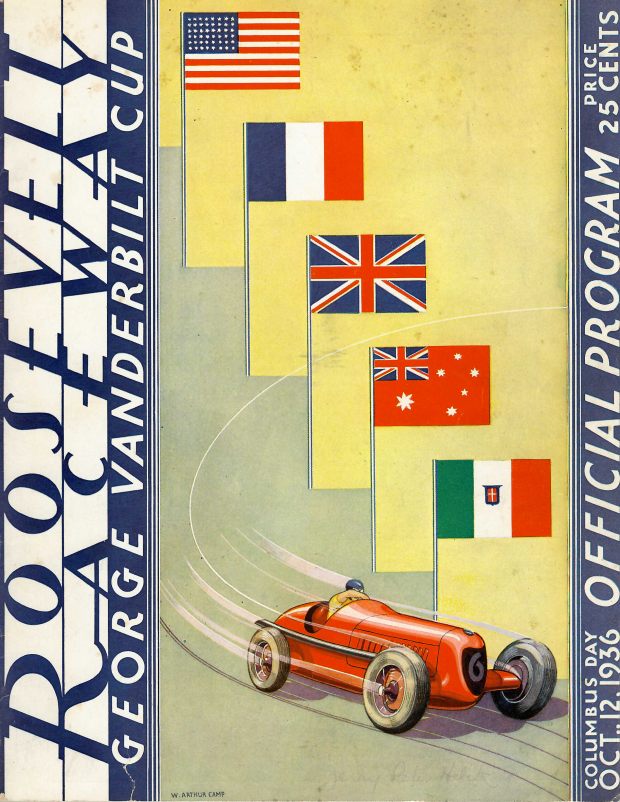
Today marks the 85th anniversary of the day on October 12th, 1936, when the Vanderbilt Cup Races were revived by Willie K’s nephew, George Washington Vanderbilt III. Today, from the Helck Collection, we take a long look at the official program for the 1936 race.
Greg O.
Officials, Judges and management

The official program and souvenir book of the Vanderbilt Cup Race revival. This time, Willie K’s nephew, George Washington Vanderbilt III, is offering up a sterling silver cup made by Cartier to the winner, and lap cash prizes for individual laps.

A couple of familiar faces from past Vanderbilt Cup Races.
George Washington Vanderbilt III, Boston Redskins owner George Preston Marshall, and Eddie Rickenbacker raised money to return international racing to Long Island. George Robertson, 1908 Vanderbilt Cup winner driving 'Old 16', was vice president and general manager, overseeing construction of the four-mile Roosevelt Raceway in Westbury.

The complete list of officials, officers, judges and management for the day. The schedule for the day as well as flag race signals are noted.
The new Roosevelt Raceway track

The track configuration was challenging for 1936.
So challenging that many of the turns were eliminated with more straightaways for a faster track the next year in 1937.

Unlike today, the rules and conditions of the race were fairly light and open to a startling variety of body and engine configurations. From Tazio Nuvolari's Grand Prix Alfa Romeo entered by Scuderia Ferrari, to Billy Winn's short-wheelbase dirt track car and Wilbur Shaw's 2-man, purpose built single race car, the field was definitely diverse.
The Entrants
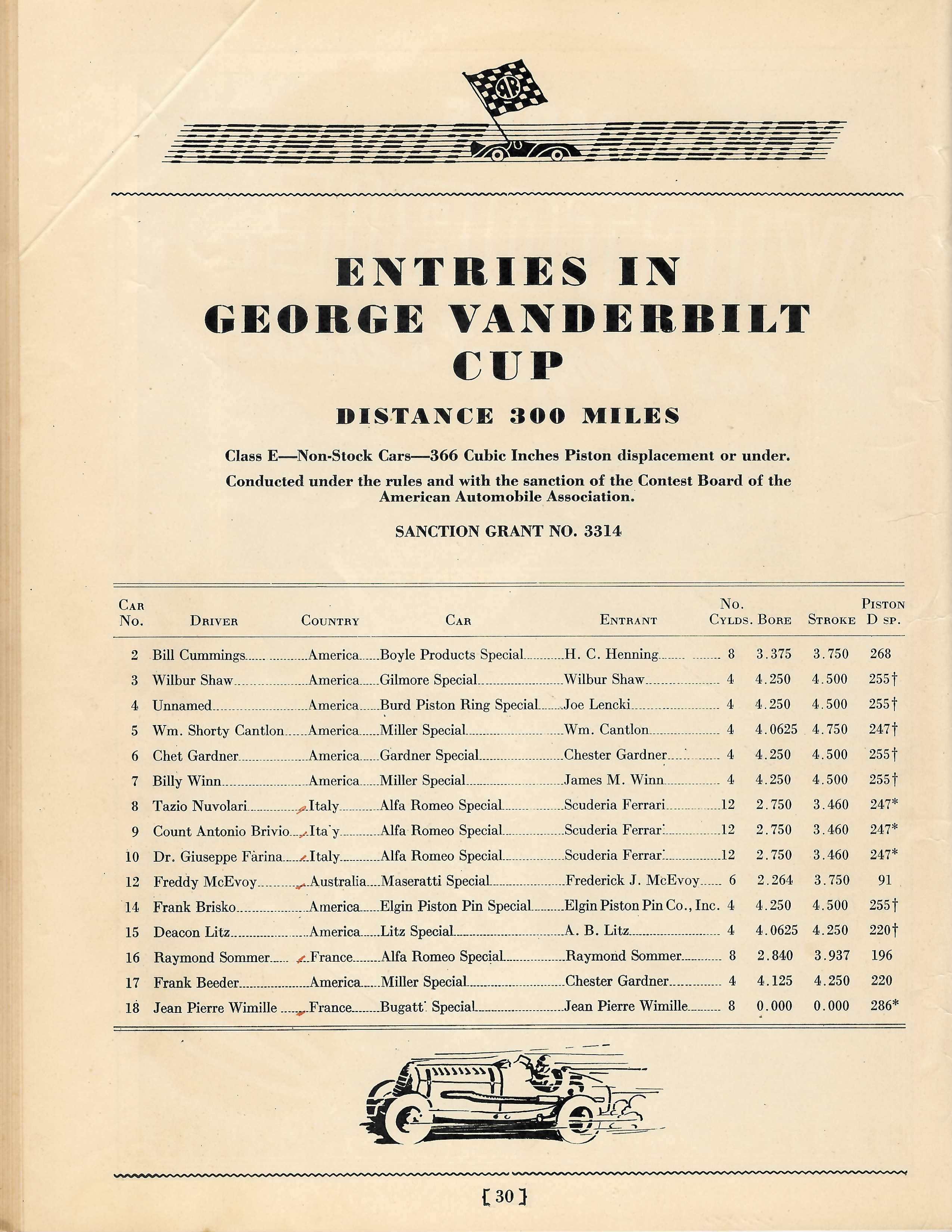
The drivers were almost as diverse as the cars themselves and came from United States, Australia, England, Italy and France.
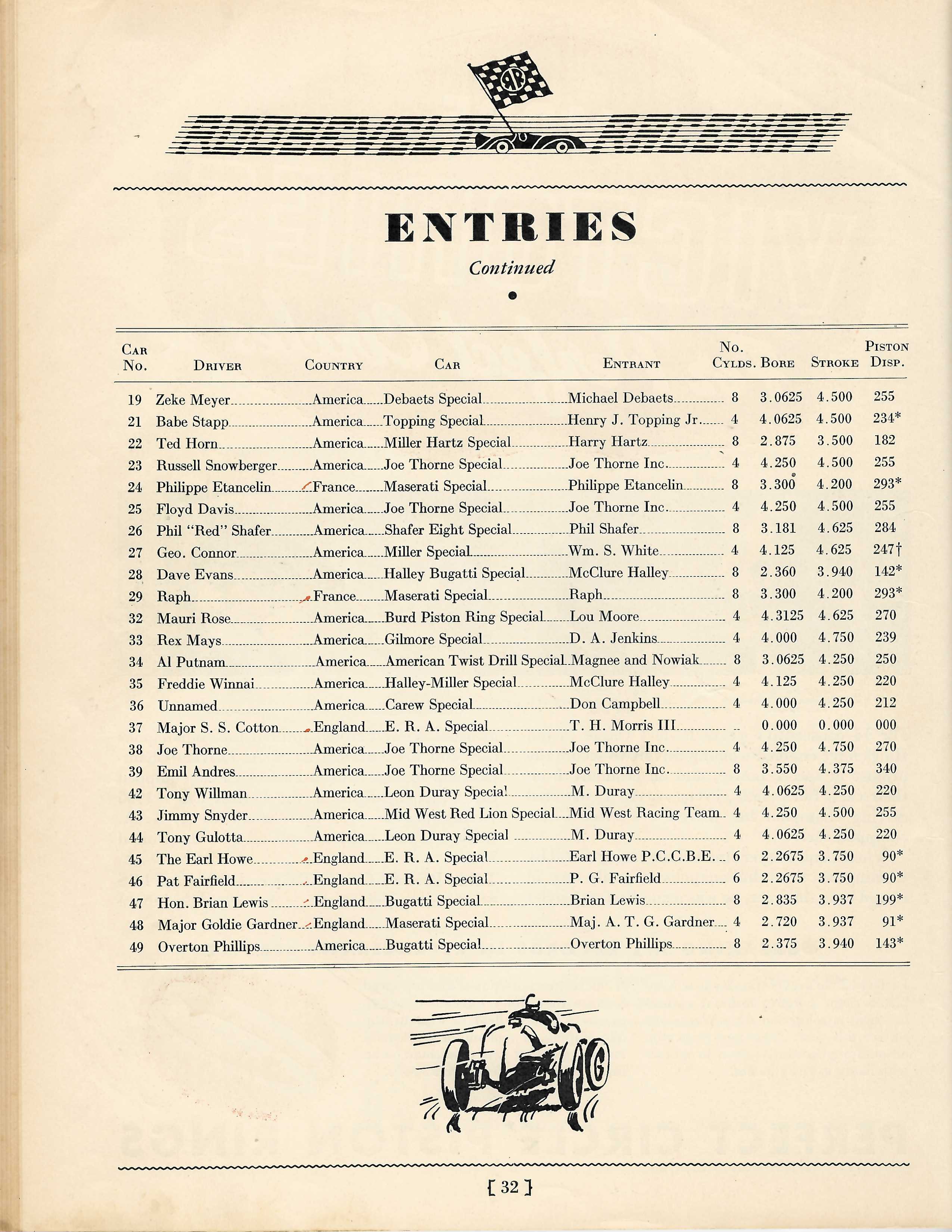
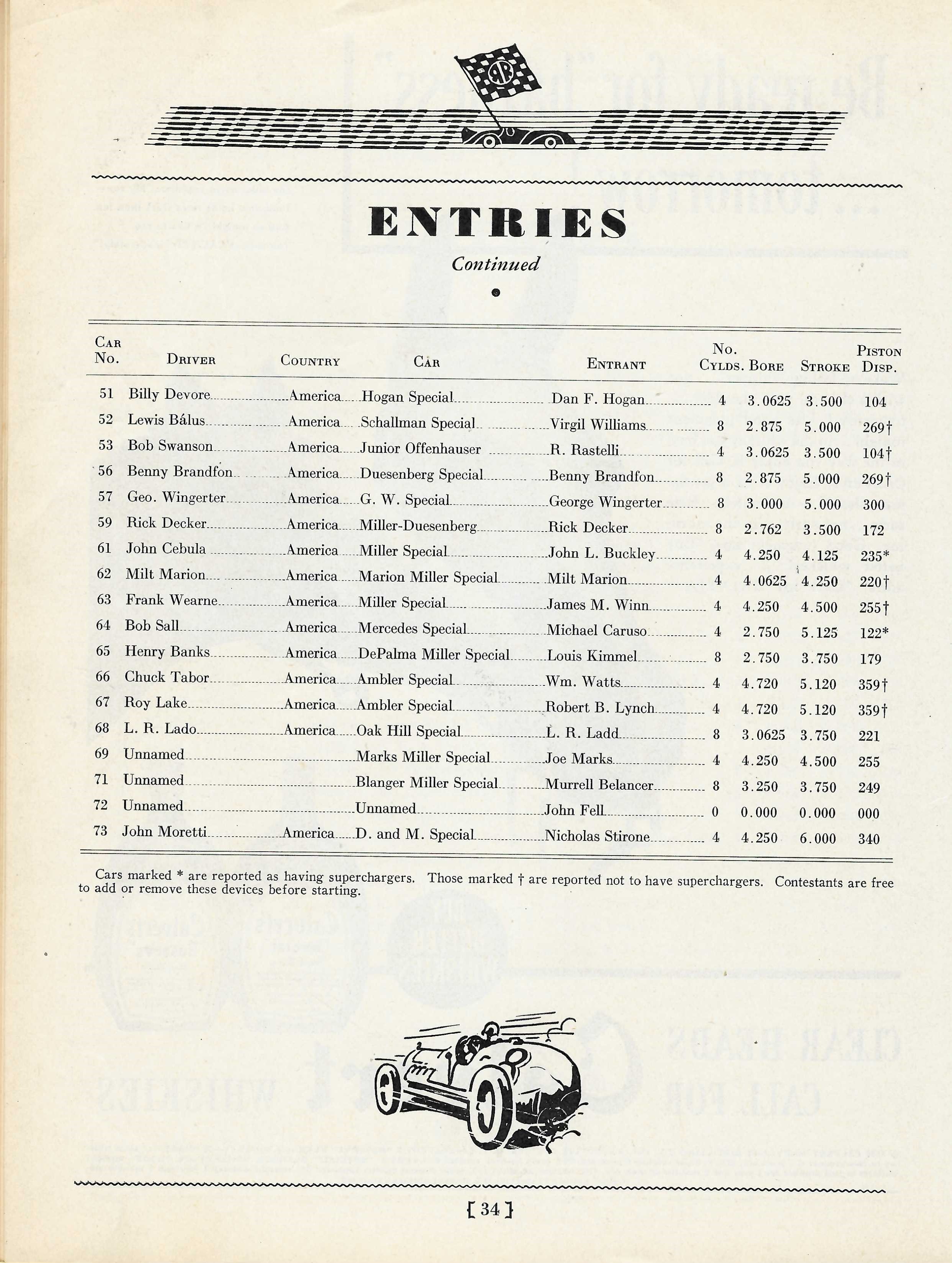
'The winner'
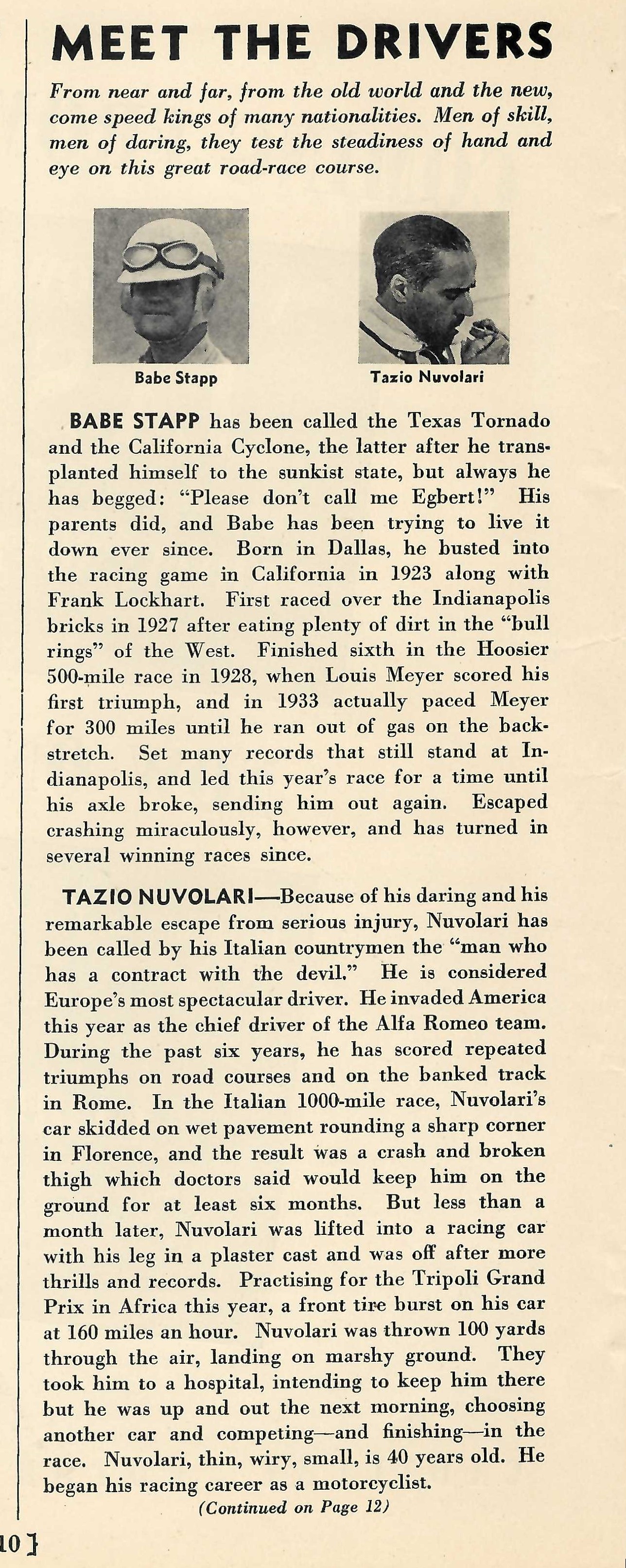
Eventual winner of the 1936 race, Tazio Nuvolari, was Europe's most spectacular driver of the day said to be a "man who has a contract with the devil".
A tough racer who less than a month after breaking a thigh in a crash, was back in a racecar in a plaster cast.
George Robertson
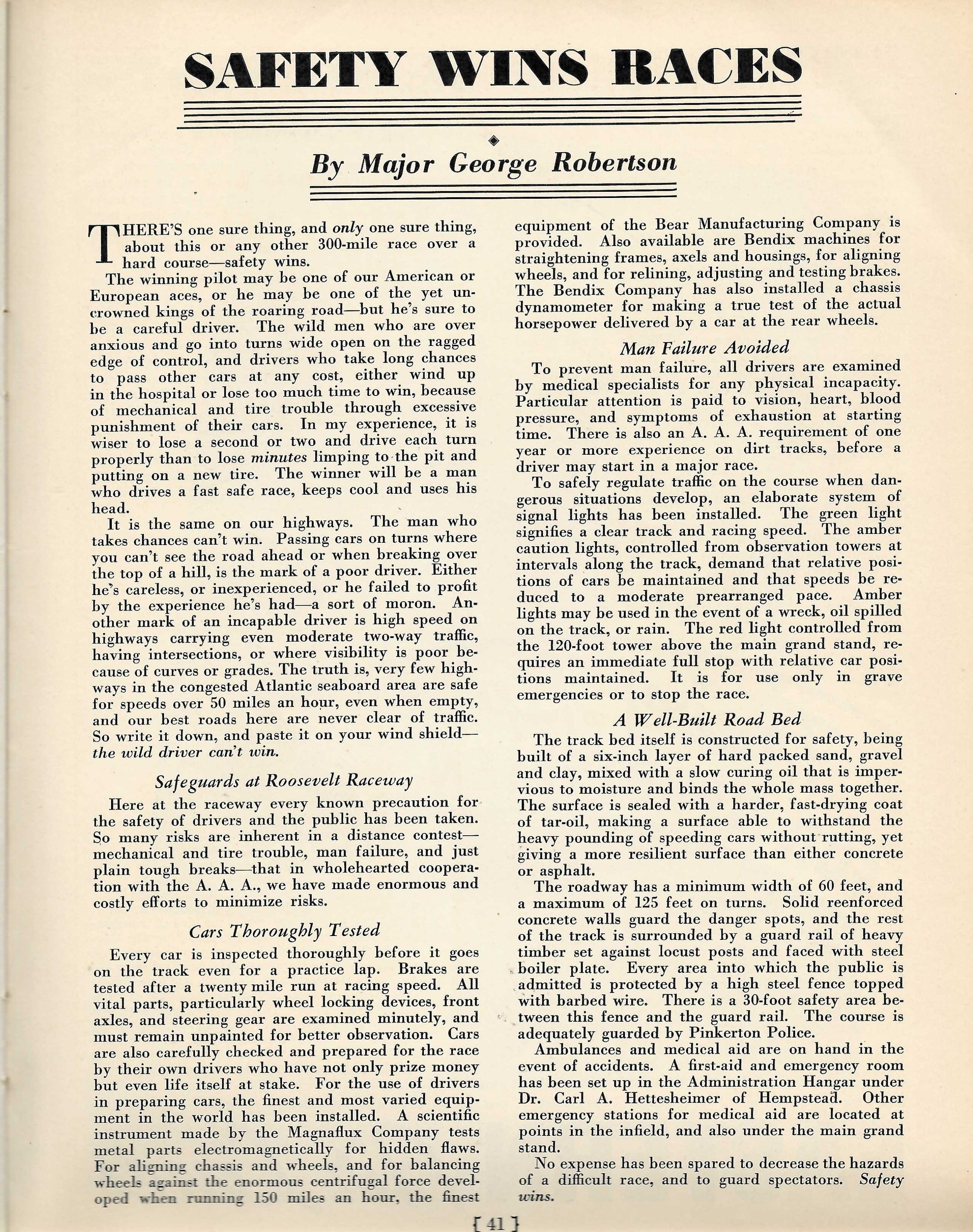
George Robertson, Vice-President of the races, winner of the 1908 VCR, speaks on the track, safety, cars and what it takes as a driver to win a race of this magnitude.
Very much like articles written by 1909/10 VCR winner Harry Grant, Robertson asserted that a calm, cool driver who takes little chances is the driver who always wins. And with those words coming from two successful Vanderbilt Cup winners, you can bet it's the truth.
Slow and steady wins the race!

In this program article written by Lawrence Warbasse, he explains the course and that a section of an original Cup race course went through where exit 3 is located, straight through the club house and on to the Motor Parkway.
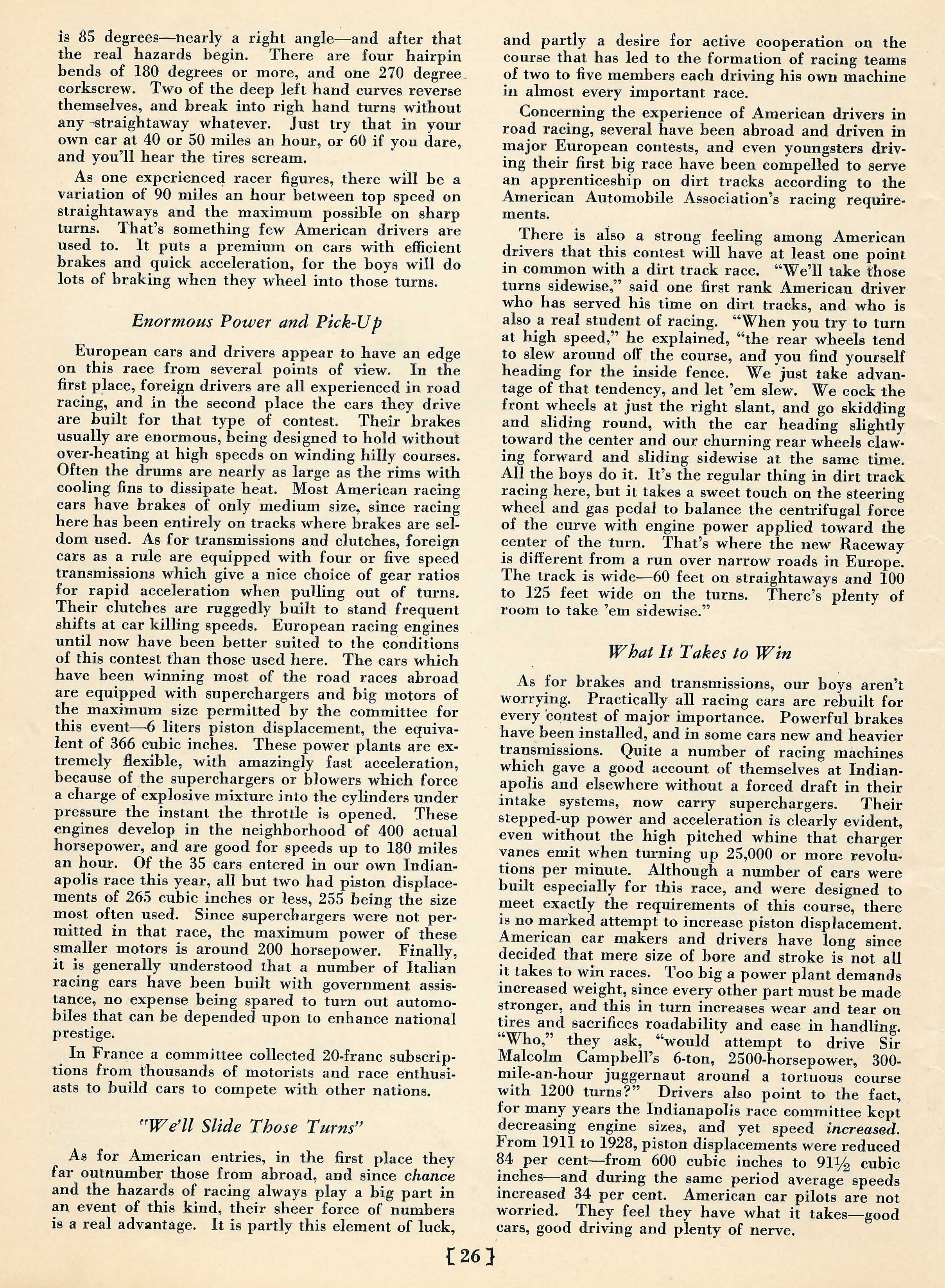
In the final paragraph, the author provides his insight on what it will take to win from a machinery aspect.
"Car Coming!"
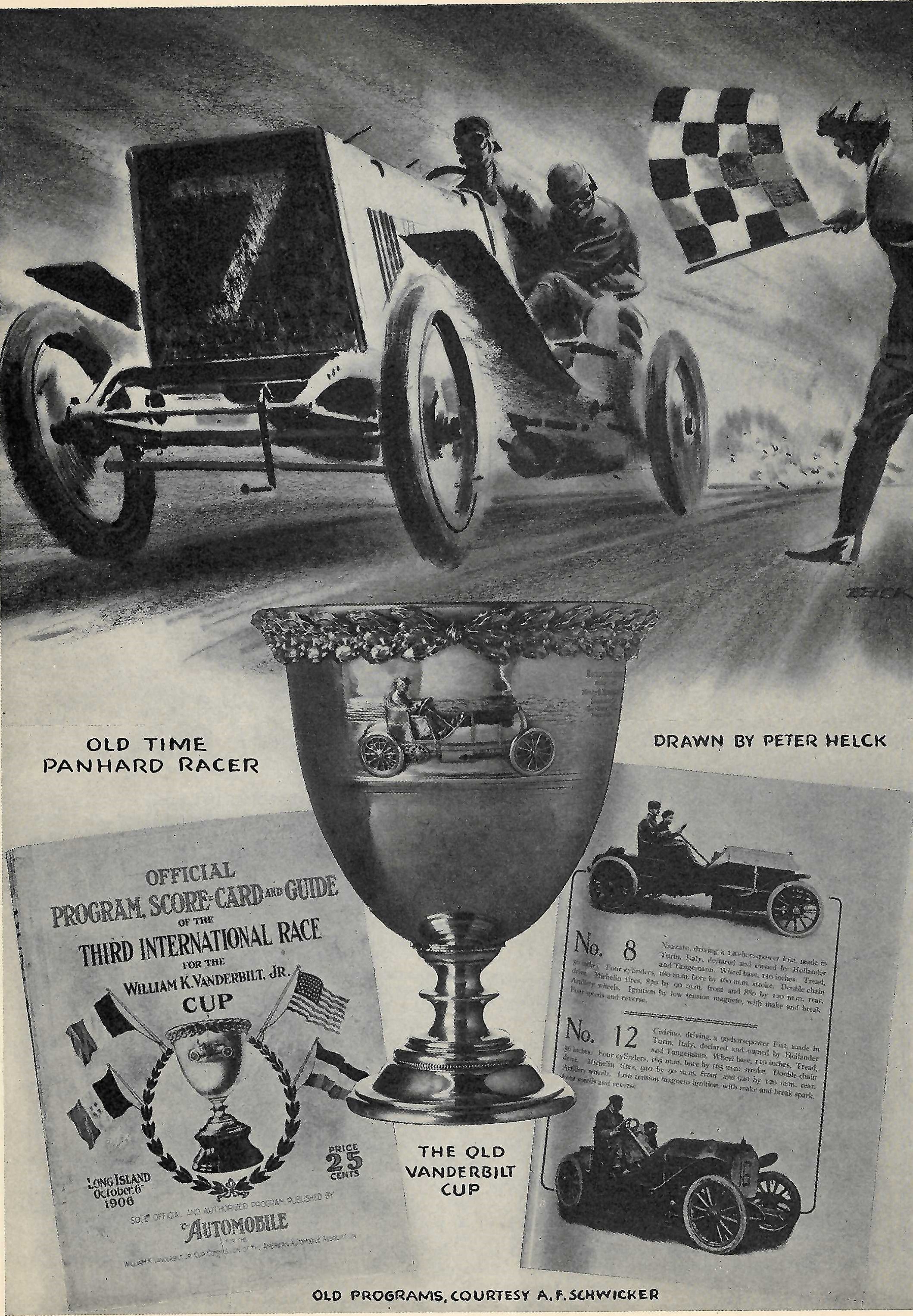
With beautiful artwork by Peter Helck, the "Car Coming!" article recalls the days of the early Vanderbilt Cup Races and many of George Robertson's exploits.
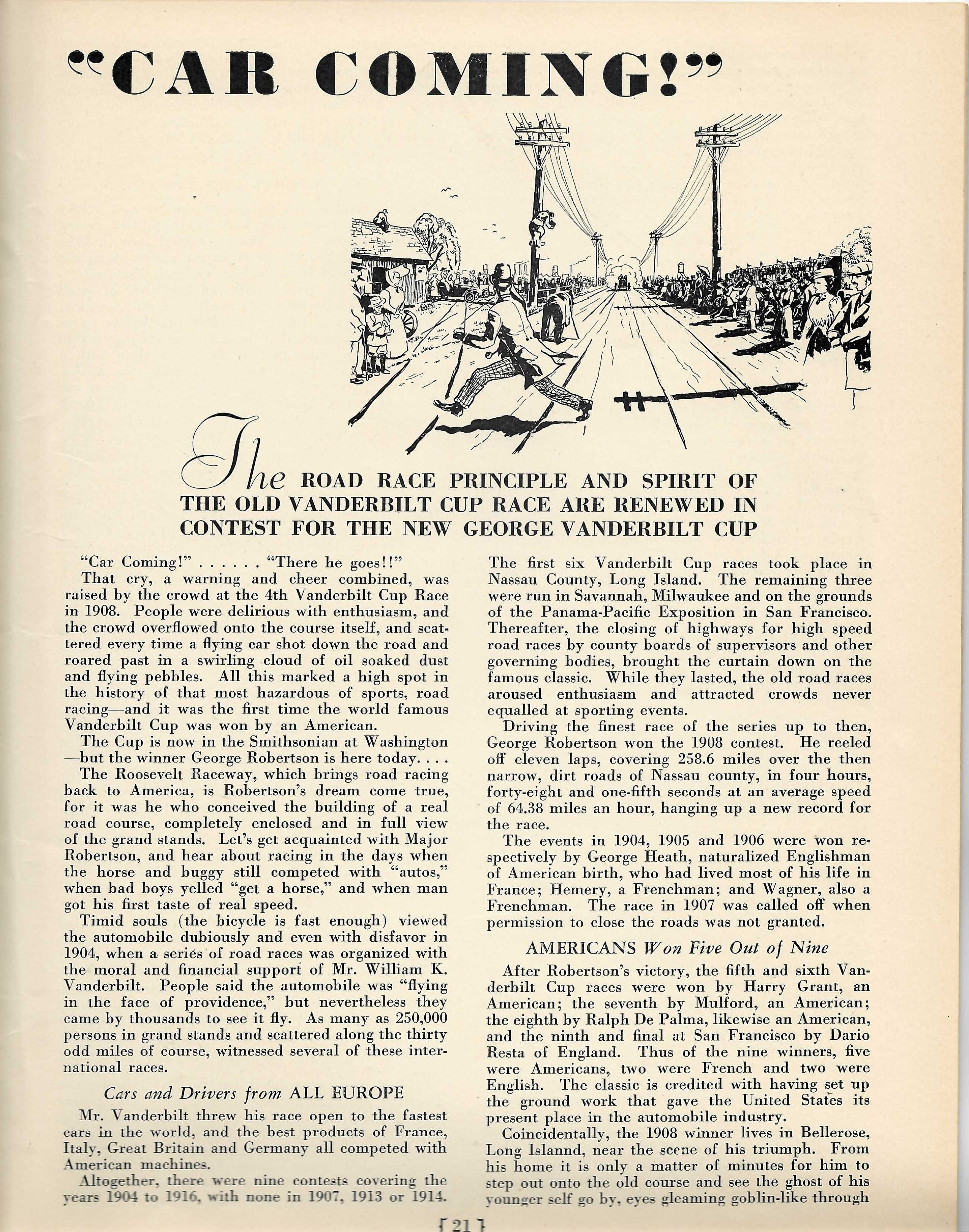
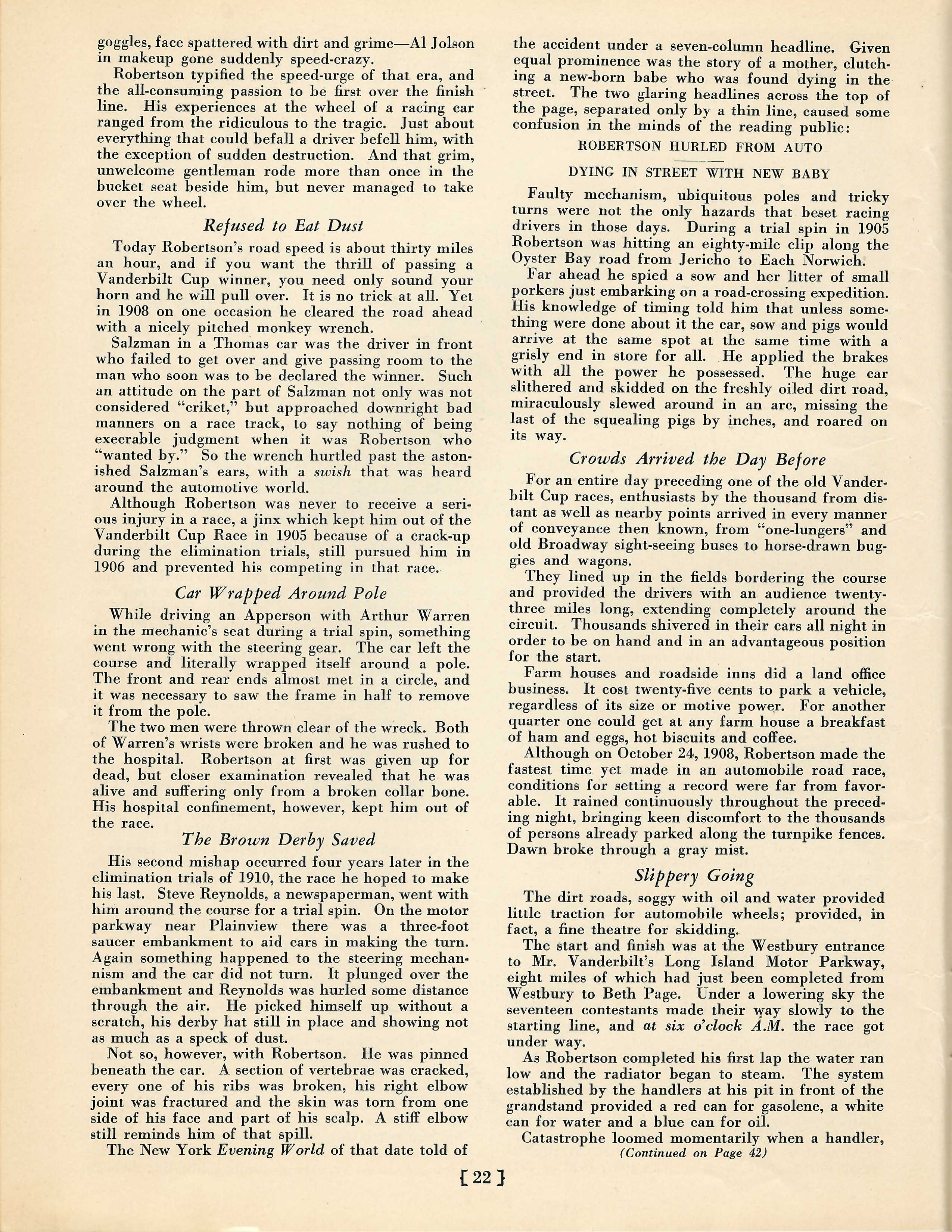
The Box holders

There was no shortage of wealthy spectators, automotive executives and others from automotive world sitting in the V.I.P. box seats.

Peter Helck himself had a box at the race and can be seen in the center of the page. Other notables are the Fords and the Firestones in attendance.

Of course George Robertson and Eddie Rickenbacker had their own box seats. 'Wm. Vanderbilt' is noted under George Vanderbilt, so it seems maybe even Willie K. was there.

A few family members from the prominent Whitney family also of note.
Individual Lap Prizes
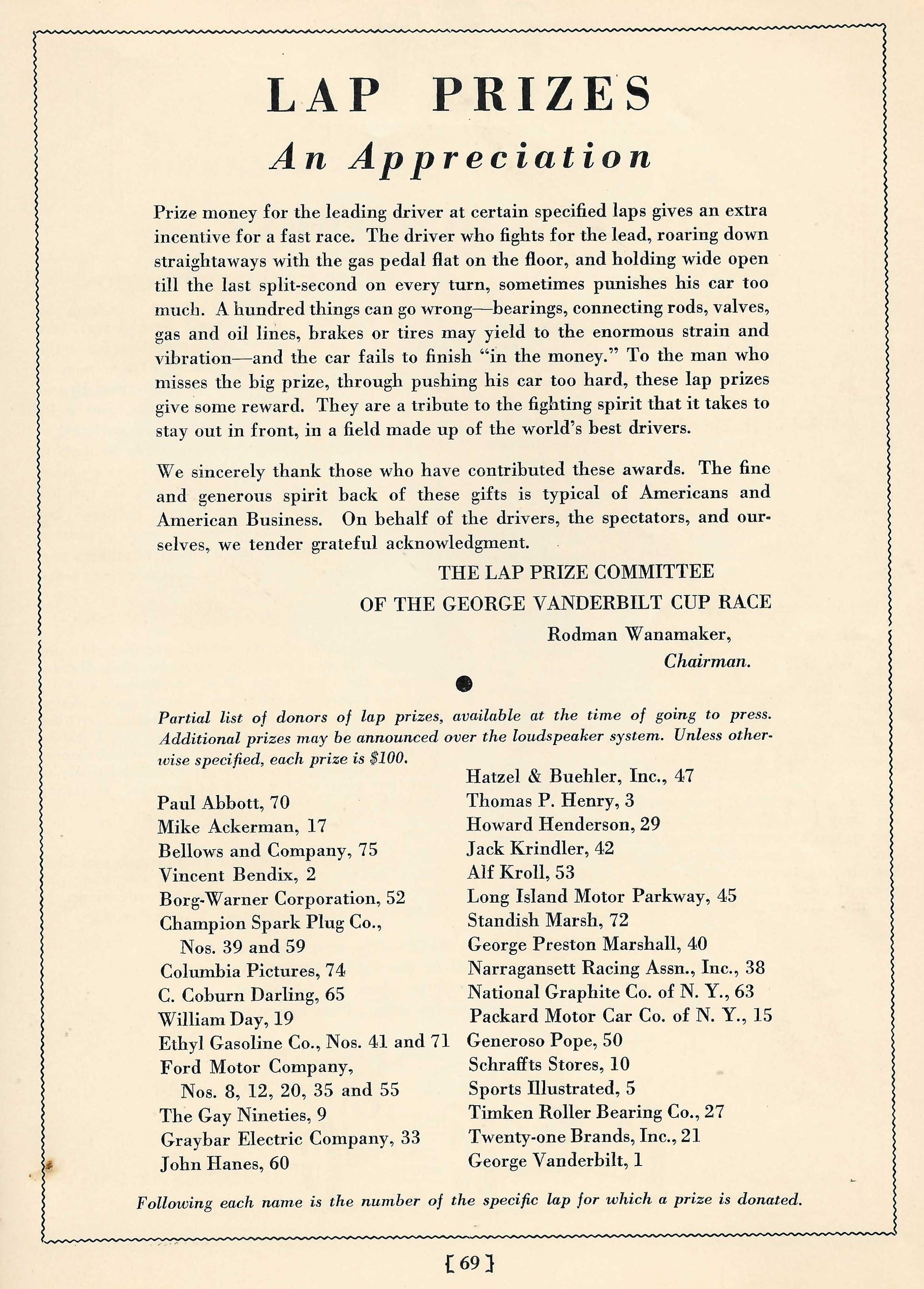
Prize money was awarded to drivers leading certain laps throughout the race in order to provide a small consolation should they find themselves out of the race at some point and not the winner.
The lap prize was $100 to the driver who led in that lap and the lap number is located next to prize donor of that lap.
The Long Island Motor Parkway was a $100 lap donor for lap #45 in the race.

The last page of the program is directed to the patrons. It details driving and mass transit directions, comfort stations, telephones, fire and medical aid. Interesting for Motor parkway enthusiasts is the mention of how to use the Parkway and its exits.
"For driving to New York the Motor Parkway offers a clear road, without lights or cross traffic, direct to Horace Harding Boulevard."
At the bottom of the page was a teaser for the Pan American Auto Race to be held the following year in July, 1937. It's unclear if that race ever came to be as the 1937 Vanderbilt Cup race was held on July 3rd, 1937.
The Advertisements

Always fun when reading any print from decades ago are the advertisements.
The program is 71 pages with about 50 of them devoted to ads. Can't get them all here, but here are a few notable ads.
The first one comes from the Motor Parkway. Still financially struggling to stay afloat, they had a prominent ad just 2 years before it closed permanently.

A neat ad from the new owners of the Garden City Garage reprinted their original ad from the 1906 race program.

The Beau Sejour in Bethpage was popular place for motorists to stay during the original Vanderbilt Cup Races.

Cartier's ad showing the cup they designed and made for the race winner.

General Contractor Edmund Rappoli amazingly built the track in under 3 months and was very proud of the fact.
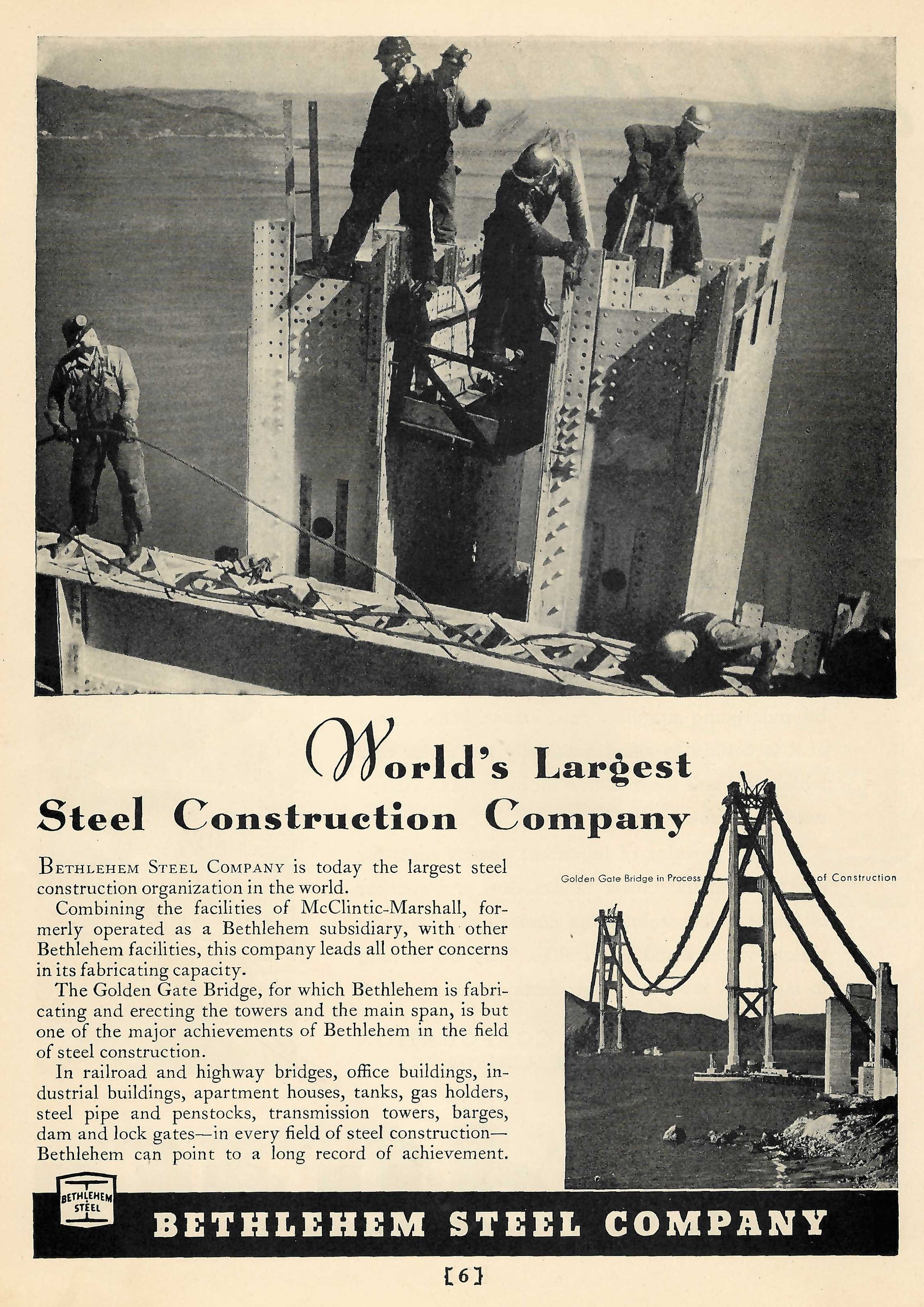
Bethlehem Steel supplying steel for the Golden Gate Bridge to open the following year in 1937.
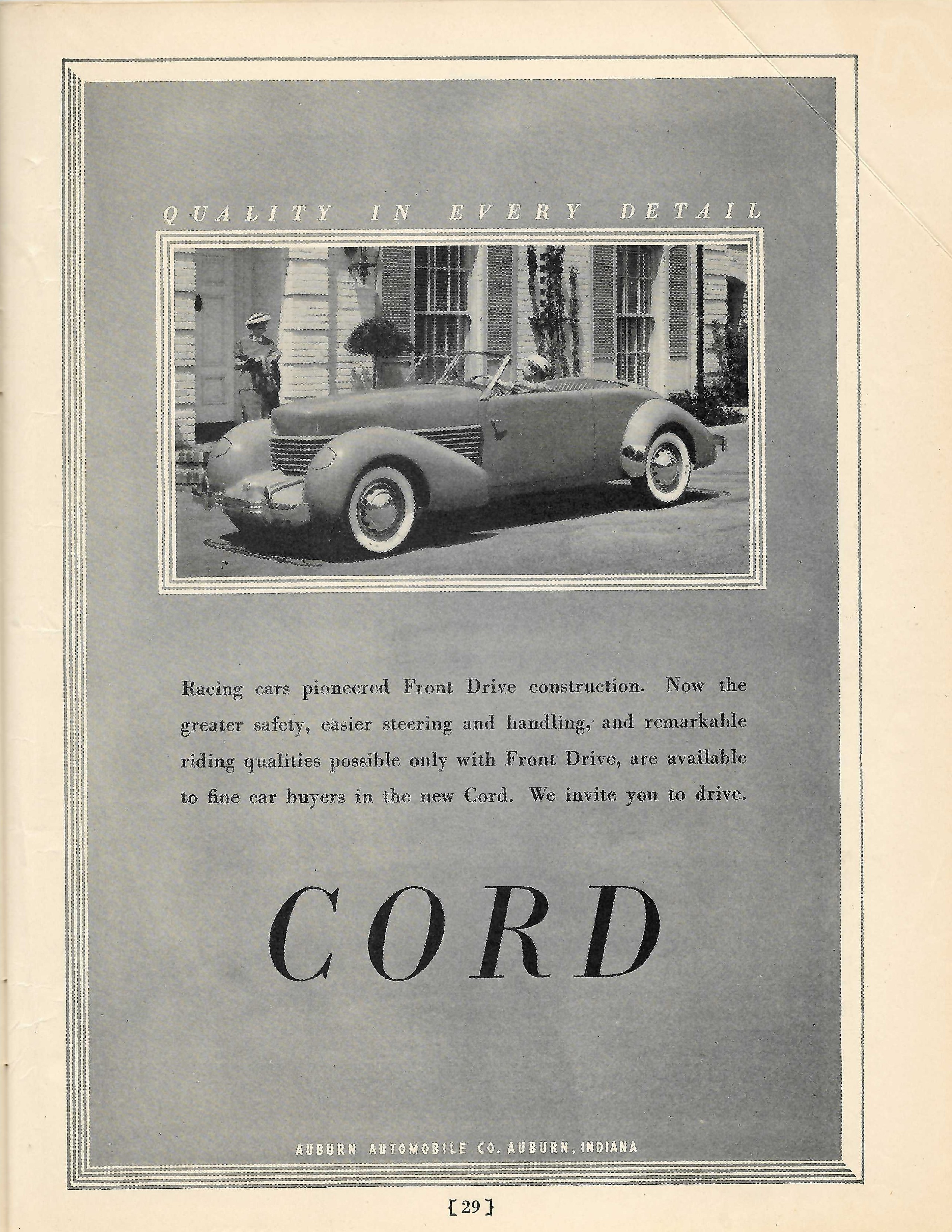
With a quick little, indirect nod to Walter Christie, Cord showing off their beautiful new front wheel drive 810 for 1936. An extremely desirable and expensive car to this day.

Rothman's Steak House in East Norwich. It's said that Teddy Roosevelt would often ride his horse from Sagamore Hill to Rothman's for dinner. While it was known as Bacharach's for a short time when Burt Bacharach owned it, it's Rothman's again, still there and still serving great steaks today! Was anyone aware that Burt Bacharach also grew up in the Dairyman's cottage that was once part of Clarence Mackey's Harbor Hill?


Comments
I have the 1930s Vanderbilt programs as well in my archives. GREAT stuff, and especially for listing the local car dealerships and their addresses/locations. It can give you a great number of locations to see if the building still survives in tact and is not totally altered from when it was new with the addition of aluminum siding,windows , neon signs etc.